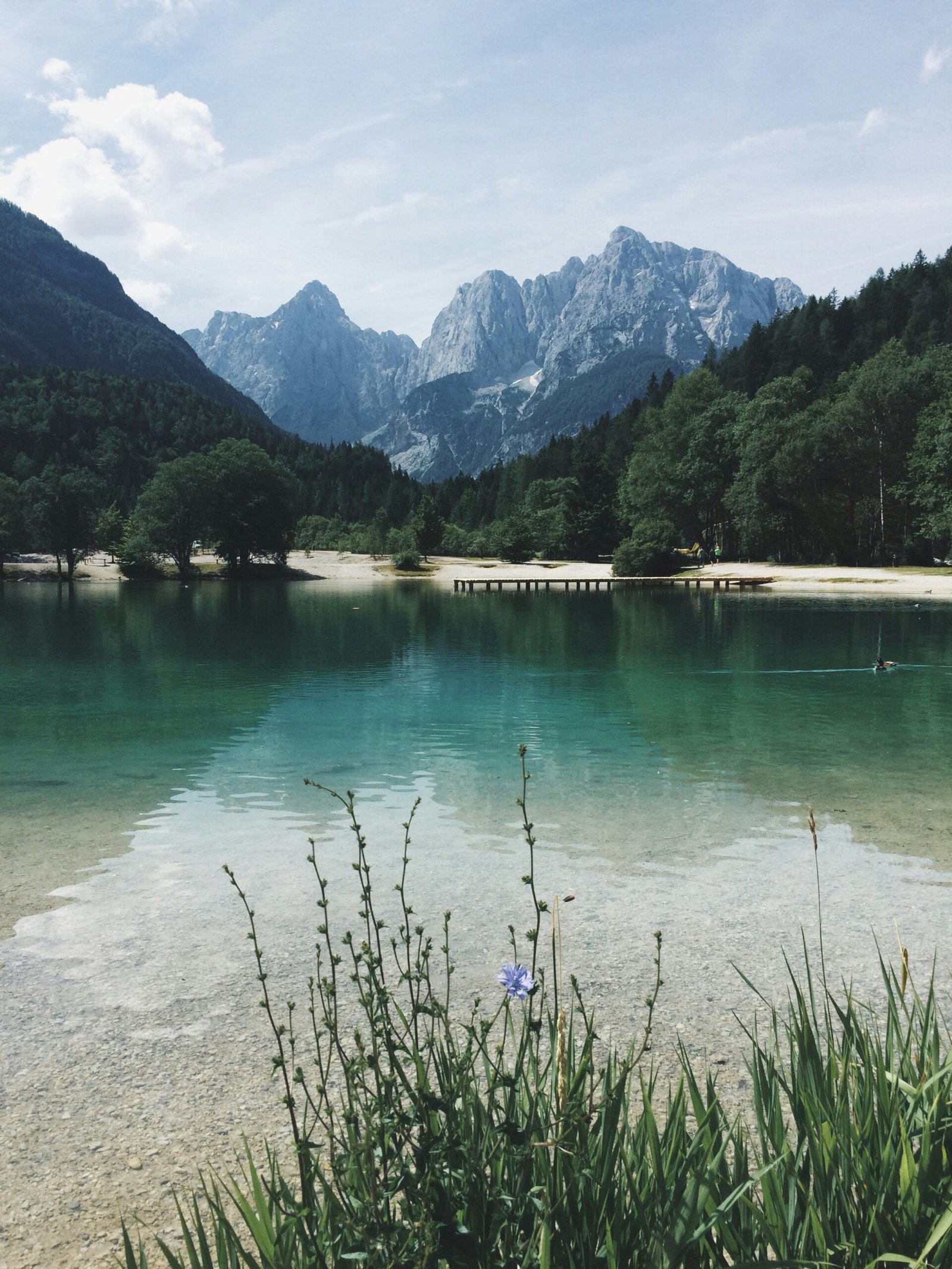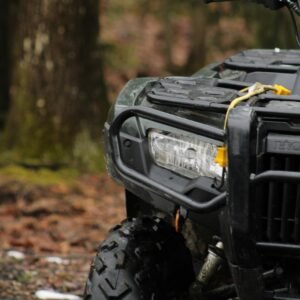If you’re an adventurous soul seeking the perfect off-road experience, look no further than “The Ultimate Guide to Mountain ATV Trails”. This comprehensive guide is your ticket to discovering thrilling and breathtaking trails that wind through picturesque mountain landscapes. Whether you’re a seasoned rider or a beginner, this guide has everything you need to know—from the best trails to equipment recommendations and safety tips. So grab your helmet, rev up your engine, and get ready for an unforgettable ATV adventure in the mountains.

This image is property of images.unsplash.com.
Choosing the Right ATV
When it comes to choosing the right ATV for mountain trails, there are several factors to consider. First and foremost, you need to think about the terrain you will be riding on. Mountain trails can be rough and challenging, with steep inclines and rocky terrain. Look for an ATV that is specifically designed for off-road use and has the necessary features to handle these types of conditions.
The engine size of your ATV is also an important factor to consider. A larger engine size will provide more power and torque, which can be beneficial when tackling steep inclines or navigating through difficult terrain. However, a larger engine also means more weight, so you need to strike a balance between power and maneuverability.
Another important consideration is the suspension and handling of the ATV. A good suspension system will help absorb the bumps and shocks you encounter on the trails, providing a smoother and more comfortable ride. Look for an ATV with adjustable suspension, so you can tailor it to the specific conditions of the trail.
Lastly, don’t forget about safety features. Mountain trails can be unpredictable, so it’s important to have the necessary safety measures in place. Look for an ATV with features such as roll cages, seat belts, and sturdy construction. These features can greatly reduce the risk of injury in the event of a rollover or accident.
Preparing for the Trail
Before hitting the mountain trails, it’s essential to do some thorough preparation. This includes researching the trail you plan to ride on. Find out the difficulty level, length, and any potential hazards or challenges you may encounter. This information will help you better prepare for the ride and ensure that you have the right skills and equipment.
In addition to researching the trail, it’s important to check local regulations and permits. Some trails may require permits or have specific rules and regulations in place. Make sure you are aware of these requirements and have obtained any necessary permits before heading out.
Gathering essential gear is another crucial step in preparing for the trail. This includes wearing the proper protective gear, such as a helmet, goggles, gloves, and sturdy boots. You should also pack a first aid kit, water, snacks, a map, and a cellphone in case of emergencies. Being prepared with the right gear can make a huge difference in your safety and comfort on the trails.
Lastly, perform pre-ride maintenance checks on your ATV to ensure it is in good working condition. Check the tires for proper inflation and tread, inspect the brakes, and make sure all lights and signals are functioning properly. It’s also a good idea to carry a basic tool kit with you in case you need to make any minor repairs on the trail.

This image is property of images.unsplash.com.
Safety Tips for Mountain ATV Trails
Safety should always be a top priority when riding ATV trails, especially in mountainous terrain. Here are a few essential safety tips to keep in mind:
-
Wear proper protective gear: Always wear a DOT-approved helmet, goggles, gloves, long sleeves, long pants, and boots that cover your ankles. This gear can protect you from dirt, rocks, branches, and other hazards on the trail.
-
Ride with a buddy: It’s always safer to ride with a buddy rather than going alone. If one person gets into trouble or has an accident, the other can provide assistance or call for help.
-
Observe trail etiquette: Respect other trail users, including hikers, bikers, and equestrians. Keep a safe distance, slow down when approaching others, and yield the right of way as needed.
-
Maintain a safe speed: Speed can be a major factor in accidents on ATV trails. Always ride at a safe and appropriate speed for the terrain and conditions. Remember, it’s better to take it slow and steady than to risk a dangerous situation.
Mastering Basic ATV Riding Techniques
To fully enjoy your ATV experience on mountain trails, it’s important to master some basic riding techniques. These techniques will help you navigate the terrain safely and improve your overall control and confidence on the trails.
Proper body positioning is key to maintaining balance and control on your ATV. Sit with your weight evenly distributed, and keep your feet on the footrests at all times. This will allow you to make quick and precise adjustments as needed.
Throttle control is another crucial skill to master. Control the throttle smoothly and gradually to maintain a steady speed. Avoid sudden or jerky movements, as this can lead to loss of control and accidents.
Braking techniques are equally important. Always use both front and rear brakes simultaneously for maximum stopping power. Practice using the brakes in various situations, such as going downhill or making tight turns, to become comfortable and confident with your braking abilities.
Steering and cornering require finesse and precision. Lean into turns and use your body weight to shift the ATV’s balance. Look through the turn to anticipate what lies ahead and maintain a smooth and steady line.

This image is property of images.unsplash.com.
Navigating Uphill and Downhill Terrain
Mountain trails often include steep uphill and downhill sections that require a different approach compared to flat terrain. Here are some tips for navigating these challenging sections:
When climbing uphill, it’s important to use low gear. This provides more power and torque to overcome the steep gradient. Lean forward slightly to keep the front tires grounded and maintain traction. Avoid sudden acceleration, as it can cause the tires to spin and lose grip.
When descending, maintain a controlled descent by using a combination of engine braking and light use of the brakes. Choose a safe and steady speed that allows you to maintain control and react to any obstacles or changes in the trail. Avoid sudden turns or braking, as this can cause the ATV to flip or slide.
Always watch out for obstacles, such as rocks, fallen trees, or loose soil. Take your time and carefully navigate around or over these obstacles. If possible, scout the trail ahead to identify potential hazards and plan your route accordingly.
Handling Tight Turns and Switchbacks
Tight turns and switchbacks can be challenging, even for experienced riders. Here are some techniques to help you navigate these sections with ease:
Look through the turn, focusing on where you want to go rather than staring directly in front of your ATV. This will help you anticipate any changes in terrain and plan your line accordingly.
Lean into the turn by shifting your body weight in the direction of the turn. This will help counterbalance the ATV and improve stability and control.
Apply smooth throttle control throughout the turn. Gradually increase or decrease throttle as needed to maintain a steady speed and control your line.
If you’re new to handling tight turns, practice on less challenging turns before attempting more difficult ones. Gradually build up your skills and confidence as you become more comfortable with the technique.
Crossing Water Crossings Safely
Water crossings can be exhilarating but also pose unique challenges. Here are some tips to ensure a safe and successful crossing:
Assess water depth and current before attempting to cross. If the water is too deep or the current is strong, it’s best to find an alternate route or wait until conditions improve.
Maintain a steady speed through the water crossing. Avoid abrupt changes in speed or sudden acceleration or deceleration, as these can cause loss of traction and stability.
Keep your feet on the footrests for stability. Avoid dragging them in the water to prevent injury or becoming entangled with underwater obstacles.
Crossing water crossings can be especially challenging, so it’s important to exercise caution and use your judgment to determine if the crossing is safe.
Dealing with Rocky and Rough Terrain
Rocky and rough terrain can present unique challenges for ATV riders. Here are some tips to help you navigate these sections:
Choose the right line when riding over rocky terrain. Look for the smoothest and most stable path, avoiding large rocks or obstacles that could cause you to lose control or get stuck.
Choose an appropriate speed that allows you to maintain control and react to changes in the terrain. It’s better to go slow and steady to prevent accidents and damage to your ATV.
Maintain a loose grip on the handlebars to allow the ATV to move and absorb the bumps and shocks of the rough terrain. This will also help prevent arm fatigue and improve control.
If you encounter obstacles that are too challenging to ride over, consider using a paddling technique. This involves using your feet to paddle and lift the ATV over the obstacle. Practice this technique to become more comfortable and efficient when dealing with rough terrain.
Handling Mud and Sand
Mud and sand can make for a thrilling ride but also require some specific techniques to navigate safely. Here are some tips to help you handle mud and sand:
Reducing tire pressure can improve traction on soft surfaces like mud and sand. Lowering the pressure slightly allows the tires to conform to the terrain and provide better grip.
Apply consistent throttle control when riding through mud or sand. Avoid sudden bursts of speed or aggressive acceleration, as this can cause the tires to lose traction.
When braking, do so gradually and avoid sudden or hard braking. Be aware that braking distances may be longer on muddy or sandy surfaces.
For extreme mud or sand conditions, consider using paddle tires. These specialized tires have large, paddle-like treads that offer maximum traction in loose or slippery terrain.
Trailside Maintenance and Repairs
Even with proper preparation and maintenance, there is always a chance of encountering mechanical issues on the trail. Here are some tips for trailside maintenance and repairs:
Carry essential tools and spare parts with you on every ride. This may include items such as a tire repair kit, wrenches, pliers, zip ties, and spare fuses. These tools can help you address minor issues that may arise on the trail.
During breaks, perform regular checks on your ATV. Inspect the tires for any signs of damage or low pressure, check the oil and coolant levels, and ensure all bolts and fasteners are tight and secure.
If you encounter minor mechanical issues on the trail, such as a loose bolt or a minor oil leak, address them as soon as possible. Use the tools and spare parts you have to fix the issue or make temporary repairs to allow you to safely return home.
Know your limits and when to call for professional help. If you encounter a major mechanical failure or a problem you’re not comfortable fixing yourself, it’s best to contact a professional ATV mechanic for assistance.
In conclusion, riding on mountain ATV trails can be an exciting and rewarding experience. By choosing the right ATV, preparing adequately, and mastering essential riding techniques, you can enjoy the trails safely and confidently. Remember to always prioritize safety, observe trail etiquette, and have the necessary gear and tools to handle any situation that may arise. Happy trail riding!




